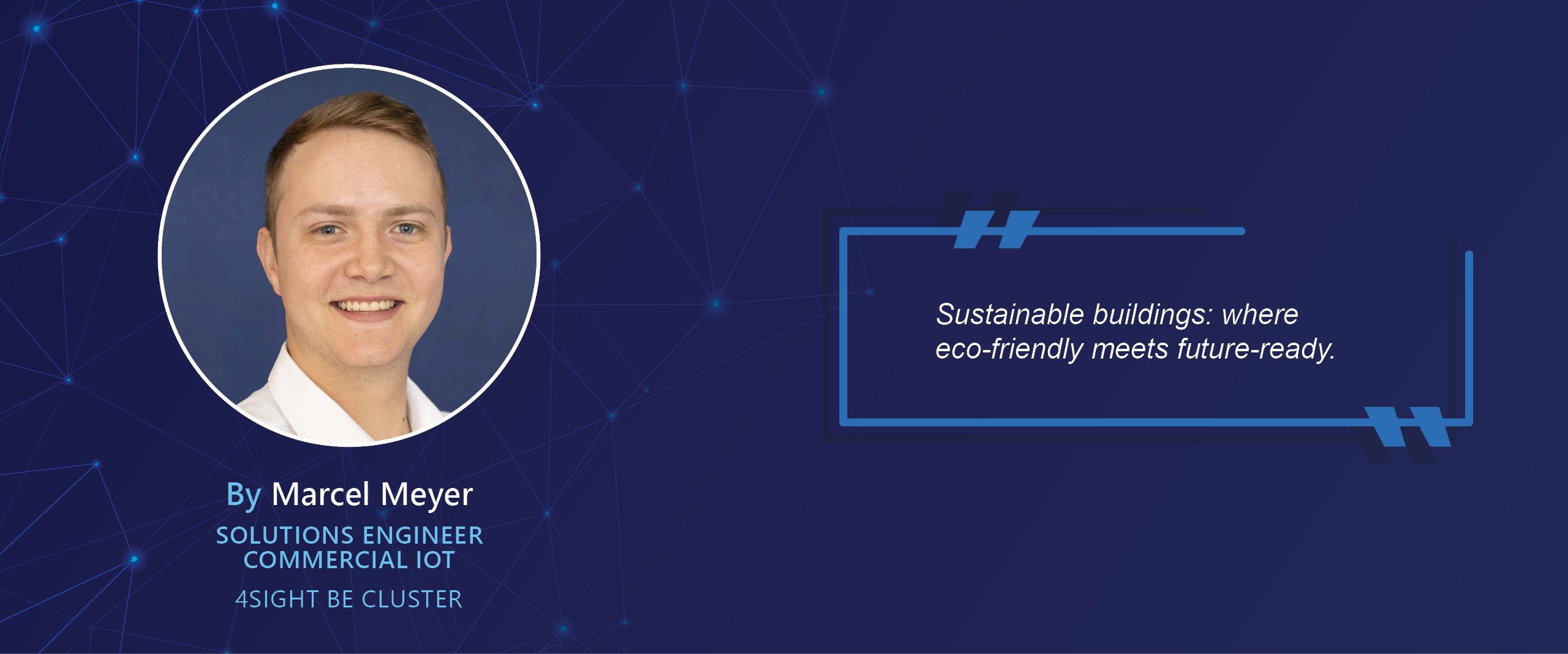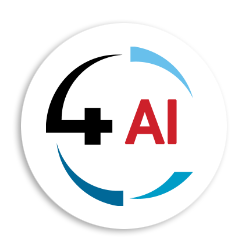Blog - Business Environment
Sustainable Buildings in the Digital Age: Transforming the built environment with Data-Driven Insights

Now, let’s delve into the numbers—the cold, hard evidence that underscores our buildings’ impact:
Buildings devour a staggering 30% of global final energy consumption. Imagine the collective energy appetite of every office tower, apartment complex, and suburban dwelling. It’s immense, and it’s growing. The carbon dioxide emissions from buildings operations have reached an all-time high—around 10 gigatons (GtCO2). That’s equivalent to the annual emissions of several large countries combined. Despite efforts, we’re not on track to achieve decarbonisation by 2050. If left unchecked, buildings’ contribution to greenhouse gas emissions is set to double by 2050. Our silent structures are unwittingly amplifying the climate crisis.
As we stand at this crossroads, digital transformation offers hope. Smart technologies, data-driven insights, and sustainable design principles can breathe new life into our aging buildings. It’s time to rewrite their legacy—to turn them from unwitting contributors to climate heroes. Join us on this journey toward greener, smarter, and more resilient structures with the sustainable buildings advisory and design that 4Sight offers.
Come with me on a journey of discovery on how buildings function at the moment, and the typical problems we all run into.
One of the very first challenges faced in the build environment is outdated systems and inefficient hardware. Traditional buildings often rely on outdated systems that were designed decades ago. These systems lack the agility and adaptability required for today’s dynamic environment. Some common issues include:
- Manual Processes: Many buildings still operate with manual processes, from maintenance requests to energy management. This inefficiency leads to delays, errors, and increased costs.
- Silos of Information: Different departments within a building—such as facilities management, security, and finance—often use separate software and databases. This siloed approach hinders collaboration and prevents holistic decision-making. Often these separate systems utilise on-premise databases and servers that become unreachable and forgotten as time moves on. This means that entire systems are at the mercy of a cleaner not unplugging the server.
- Obsolete Hardware: Aging hardware, including HVAC systems, lighting, and sensors, consumes more energy and requires frequent maintenance. These inefficiencies contribute to higher operational costs. With aging systems that were designed for control not monitoring or Optimisation operational costs can skyrise without any warning or costs catalysts cannot be determined as no visibility is created through the operational systems.
The Carbon Footprint caused by buildings is growing as buildings become more out of date and systems become aged, the contributors to this could be deadly. Heating, cooling, lighting, and appliances account for a substantial portion of a building’s energy use. Fossil fuels power most of these systems, releasing carbon dioxide (CO₂) into the atmosphere. The construction and maintenance of buildings involve transportation of materials, leading to additional emissions. Construction waste, inefficient energy use, and water wastage all contribute to a building’s carbon footprint.
Resource Depletion is another challenge we face in the modern world summarised by the following points. Buildings consume vast amounts of water for sanitation, landscaping, and cooling. In water-scarce regions, this exacerbates the problem. Inefficient electrical systems waste energy, impacting both the environment and operational costs. Gas-powered heating and cooking systems release emissions and contribute to air pollution.
Why is change imperative at this point in time? We are all under pressure to reduce carbon emissions and live more sustainably, if we don’t start now, when will we?
In the digital age, we have the tools and strategies to revolutionise building management:
- Advanced Data Management: By leveraging data analytics, we can optimise energy usage, predict maintenance needs, and enhance occupant comfort.
- Cloud Solutions: Cloud platforms allow us to centralise data, enabling real-time monitoring and informed decision-making.
- Scalable Strategies: Implementing methodologies like Data Vault 2.0 ensures sustainable data governance and scalability.
As we stand at the crossroads of technology and sustainability, it’s time to reimagine our buildings. By embracing digital systems, we can create efficient, eco-friendly structures that benefit both occupants and the planet.
Data Management: The Key to Sustainable Transformation
Building Information Modelling (BIM)
- What is BIM? BIM is a powerful methodology that digitally represents a building’s physical and functional characteristics. Unlike 2D CAD, BIM incorporates rich information into each element, enabling collaboration across disciplines.
Benefits of BIM:
- Precise Design: Architects, engineers, and contractors work together on a detailed virtual model.
- Lifecycle Management: BIM automates processes from design to demolition.
- Resource Optimisation: BIM helps reduce waste and improve efficiency.
The Cloud: Unlocking Data’s Potential
- Data Liberation: Cloud platforms allow us to lift data out of on-premises environments. By centralising information, we gain insights into usage patterns, energy consumption, and emissions.
- Scalability: Cloud solutions scale effortlessly, accommodating growing portfolios.
- Security and Accessibility: The cloud ensures data security and provides a single pane of glass view for property management.
A Sustainable Data Strategy: Enter Data Vault 2.0
What is Data Vault 2.0?
- Scalable Architecture: Data Vault 2.0 is an evolution of the traditional Data Vault methodology. It focuses on scalability, adaptability, and agility.
- Hub, Link, and Satellite Model: Data Vault 2.0 organises data into hubs (business keys), links (relationships), and satellites (contextual information).
- Sustainable Data Governance: By implementing Data Vault 2.0, organisations establish a robust data governance framework.
What technology stack do we implement the sustainable data strategy on to ensure visibility across systems is created that will allow us to start running Optimisation initiatives for improved sustainability targets. 4Sight uses the new data management tool from Microsoft called Microsoft Fabric. Fabric allows us flexibility, scalability and agility in the built environment. Decoupling on-premises systems and integrating a complete property portfolio in one view. Some more features of Fabric are as follows:
-
Integration
Microsoft Fabric acts as the unifying thread that weaves together disparate data sources. Whether your data resides on-premises or in the cloud, Fabric seamlessly connects it. Imagine a symphony where each instrument plays in harmony—Fabric orchestrates this convergence, allowing you to harness the full potential of your building’s data ecosystem.
-
Analytics
In the era of data-driven decision-making, analytics reign supreme. Fabric doesn’t just collect data; it transforms it into actionable insights. Real-time analytics empower facility managers, energy experts, and sustainability champions. From optimising energy consumption patterns to predicting maintenance needs, Fabrics’ analytics capabilities are the compass guiding us toward greener, more efficient buildings.
-
Scalability
As your real estate portfolio expands—whether it’s commercial spaces, residential complexes, or mixed-use developments—Fabric grows with you. It’s like adding floors to a skyscraper without disrupting its foundation. The scalability of Fabric ensures that your data infrastructure keeps pace with your ambitions. From a single building to a global network, Fabric scales effortlessly.
-
Security
Our buildings hold secrets—data about occupancy patterns, energy usage, and even the ebb and flow of sunlight through windows. Microsoft’s robust security features wrap these secrets in an impenetrable cloak. Fabric safeguards your data against cyber threats, unauthorised access, and breaches. It’s the guardian of your building’s digital soul. Now, let’s connect the dots. Imagine if every building—every office tower, every school, every cozy home—embraced Fabric. The collective impact would be staggering.
In conclusion, sustainable buildings in the digital age require a holistic approach. By leveraging advanced data management, cloud solutions, Data Vault 2.0, and technologies like Microsoft Fabric, we can create a greener, more efficient built environment. Let’s build a future where our buildings not only shelter us but also contribute to a healthier planet.


